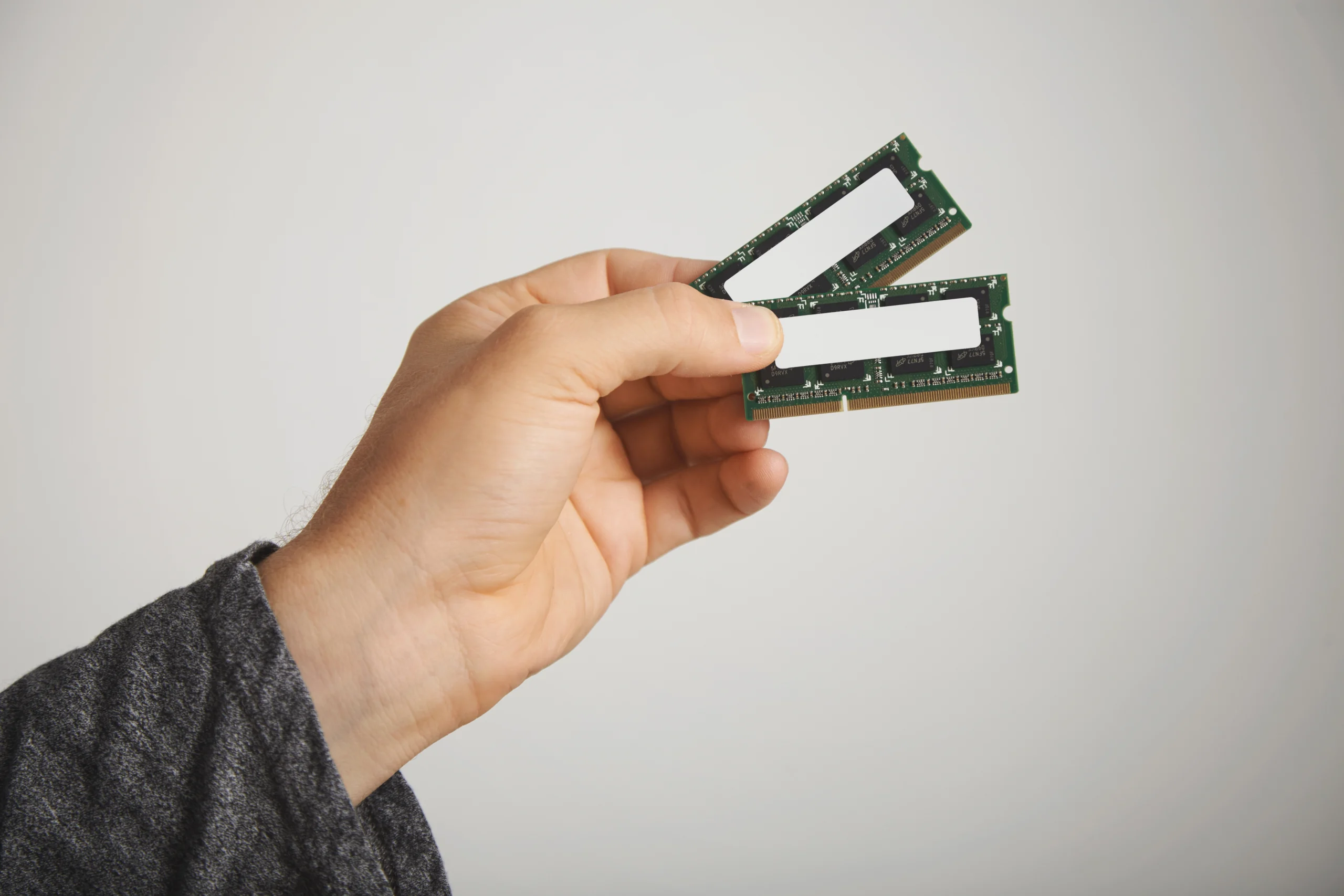What Is RAM, How Much Do You Need to Buy for Video Editing

What Is RAM, How Much Do You Need, and Which One to Buy for Video Editing in 2025?
What Is RAM?
RAM, or Random Access Memory, is a type of computer memory that temporarily stores data while a computer is running. Unlike a hard drive or SSD (solid-state drive), which stores data permanently, RAM provides fast access to data that the CPU (central processing unit) needs in real time. This rapid access is critical for multitasking and for running memory-intensive applications such as video editing software.
Key Functions of RAM:
- Speed: RAM allows your computer to quickly read and write data, which is essential for smooth video playback and editing.
- Multitasking: With sufficient RAM, your computer can handle multiple applications simultaneously, such as running video editing software while streaming reference videos.
- Temporary Storage: During editing, RAM stores temporary data like render files, previews, and real-time effects, enabling faster performance.
Why Is RAM Important for Video Editing?
Video editing involves handling large files, complex timelines, and resource-intensive effects. Without enough RAM, your computer may struggle to process high-resolution footage, leading to slow rendering times, lag, or even crashes. This can disrupt your creative workflow and extend project deadlines.
How Insufficient RAM Affects Video Editing:
- Slow Playback: Inadequate RAM can cause choppy playback, making it difficult to preview your edits in real time.
- Longer Render Times: Low memory may force your computer to use virtual memory from your hard drive, significantly slowing down rendering and exporting processes.
- Crashes and Freezes: When video editing software like Adobe Premiere Pro or DaVinci Resolve doesn’t have enough RAM to work efficiently, it can result in frequent crashes or freezes, potentially leading to lost work.
- Limited Multitasking: With insufficient RAM, running additional applications (e.g., color grading software, graphics tools, or web browsers for research) alongside your video editor can further strain your system.
For videographers in Nepal and aspiring video editors at Omega Film Institute, having a robust amount of RAM is essential to handle modern video editing tasks, especially as video resolutions and project complexities increase in 2025.
How Much RAM Do You Need for Video Editing in 2025?
The amount of RAM required for video editing largely depends on the type of projects you work on, the resolution of your footage, and the complexity of your editing workflow.
1. Basic Editing (SD/HD Projects)
For simple editing tasks involving standard-definition (SD) or high-definition (HD) footage, a minimum of 8GB to 16GB of RAM is generally sufficient. This is ideal for:
- Simple YouTube videos
- Vlogs and short-form content
- Basic corporate videos
2. Intermediate Editing (4K Footage)
As 4K video becomes more common, editing high-resolution footage requires more memory to ensure smooth performance. For 4K editing, 16GB to 32GB of RAM is recommended. This allows you to:
- Edit 4K footage with multiple layers
- Apply color grading and effects without significant lag
- Work efficiently on longer projects such as documentaries or commercials
3. Advanced Editing (8K, Complex Projects, and VFX)
For advanced editing tasks involving 8K footage, extensive visual effects, or complex projects with multiple layers and heavy color grading, you may need 32GB or more of RAM. Professional studios and high-end freelance video editors often use 64GB or even 128GB to ensure flawless performance and quick rendering times.
Considerations for Choosing RAM:
- Future-Proofing: With technology rapidly advancing, investing in a higher capacity now can ensure your system remains efficient for years to come.
- Multitasking Needs: If you plan to run multiple applications simultaneously (e.g., editing software, color grading tools, web browsers), more RAM will help maintain smooth performance.
- Project Complexity: Larger projects with more effects and higher resolutions require more RAM to process data efficiently.
Which RAM to Buy for Video Editing in 2025?
When it comes to selecting the best RAM for video editing, performance, reliability, and compatibility are key factors. Below are some top recommendations and considerations for purchasing RAM in 2025.
Top RAM Brands for Video Editing:
- Corsair Vengeance Series
- Features: High-speed performance, robust build quality, and excellent compatibility with both Intel and AMD platforms.
- Capacities: Available in various configurations from 16GB to 128GB.
- Ideal For: Professional video editors who need reliable performance for 4K or 8K editing.
- G.Skill Trident Z RGB
- Features: Not only does it offer high-speed performance, but it also features customizable RGB lighting, which can add a stylish touch to your workstation.
- Capacities: Ranging from 16GB to 128GB, with high clock speeds.
- Ideal For: Editors looking for both performance and aesthetic appeal in their hardware.
- Kingston HyperX Fury
- Features: Known for its stability and high performance, HyperX Fury offers great value for the money.
- Capacities: Available in 16GB, 32GB, and higher configurations.
- Ideal For: Budget-conscious professionals who still demand high performance for complex editing projects.
- Crucial Ballistix
- Features: Offers reliable performance with competitive pricing, making it a popular choice among gamers and creative professionals alike.
- Capacities: Available in various sizes suitable for both mid-range and high-end systems.
- Ideal For: Users looking for a balance between cost and performance without compromising on quality.
Factors to Consider When Buying RAM:
- Speed and Latency: Look for RAM with high clock speeds (measured in MHz) and low latency (CAS timings). Higher speed RAM improves data transfer rates, which is crucial for editing large video files.
- Capacity: As discussed, choose a capacity that meets your project needs. For professional video editing, 32GB is a common starting point, with higher capacities available for more intensive workflows.
- Compatibility: Ensure that the RAM you choose is compatible with your computer’s motherboard and CPU. Consult your system specifications or manufacturer’s recommendations before making a purchase.
- Overclocking Potential: For advanced users, RAM that supports overclocking can offer extra performance, but this may require additional cooling and fine-tuning.
How Upgrading Your RAM Can Transform Your Workflow
Investing in quality RAM can have a profound impact on your video editing workflow:
Faster Processing and Rendering Times
More RAM means your system can handle larger files and more complex projects without slowing down. This results in significantly reduced rendering times and smoother playback during editing sessions.
Improved Multitasking
With increased RAM, you can run multiple applications simultaneously without experiencing lag. This is particularly beneficial when you’re editing videos while simultaneously researching, browsing, or working on other tasks.
Enhanced Stability and Reliability
Sufficient RAM reduces the risk of crashes and freezes in resource-intensive applications. For video editors in Nepal who work on high-resolution projects, this stability is crucial for meeting deadlines and ensuring high-quality output.
Future-Proofing Your System
Upgrading to higher-capacity RAM now can prepare your system for future demands. As video resolutions continue to increase and editing software becomes more advanced, having extra memory ensures that your system remains capable and competitive.
The Role of Omega Film Institute in Your Video Editing Journey
For aspiring video editors and content creators in Nepal, Omega Film Institute offers comprehensive training in all aspects of video production, including hardware optimization and system setup. Our courses are designed to help you understand the technical intricacies of video editing, ensuring that you are well-equipped to handle professional projects.
What You’ll Learn at Omega Film Institute:
- Fundamentals of Video Editing: Master the basics of cutting, color grading, and audio editing.
- Advanced Post-Production Techniques: Learn how to work with industry-standard software like Adobe Premiere Pro and DaVinci Resolve.
- Hardware Optimization: Understand how to configure your computer for optimal performance, including choosing the right RAM, storage solutions, and graphics cards.
- Real-World Projects: Gain hands-on experience by working on actual video editing projects that simulate professional scenarios.
- Career Support: Benefit from job placement assistance, internships, and networking opportunities to help launch your career in the digital media industry.
Omega Film Institute is committed to providing you with the skills and knowledge necessary to excel in the competitive world of video editing. Our state-of-the-art facilities, expert instructors, and comprehensive curriculum ensure that you become a well-rounded professional capable of handling any editing challenge.
Final Thoughts
Understanding RAM and its role in video editing is crucial for any aspiring video editor or content creator in Nepal. As video editing projects become more complex and resource-intensive, investing in the right hardware is no longer optional—it’s essential for success. By knowing what RAM is, how much you need, and which models are best suited for video editing in 2025, you can ensure that your system is optimized for smooth performance, fast rendering times, and overall reliability.
For videographers and editors in Nepal, upgrading your system with high-quality RAM can transform your workflow, enhance your productivity, and ultimately improve the quality of your final videos. Whether you’re editing 4K or 8K footage, working on intricate visual effects, or managing multiple projects simultaneously, having enough RAM is critical to delivering professional results.
Omega Film Institute is at the forefront of video editing education in Nepal, offering comprehensive courses that cover not only creative editing techniques but also essential hardware optimization. Our programs are designed to equip you with the skills and knowledge needed to succeed in the competitive digital media industry.
Enroll Today and Transform Your Video Editing Career!
If you’re ready to elevate your video editing skills and build a robust, high-performance editing system, consider enrolling in a course at Omega Film Institute. Our hands-on training, expert instructors, and state-of-the-art facilities provide the perfect environment for learning and growth. Visit our website for detailed course information, success stories from our graduates, and to start your journey toward becoming a professional video editor in Nepal.
Invest in your future by mastering both the creative and technical aspects of video editing. With the right hardware, including top-quality RAM, and the best training available, you can achieve excellence in every project and set yourself apart in the dynamic world of digital media.
